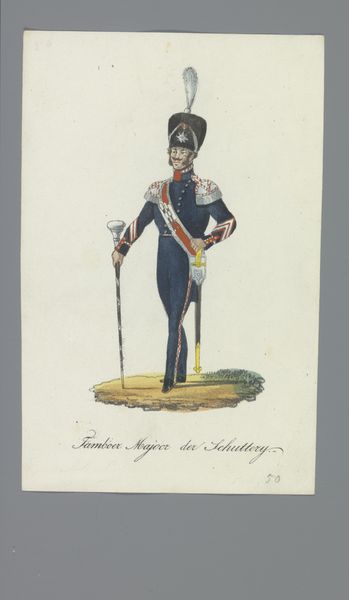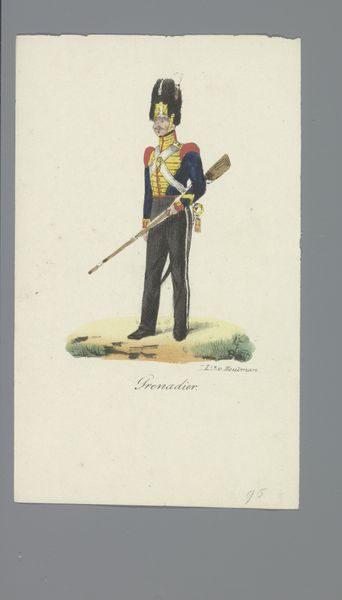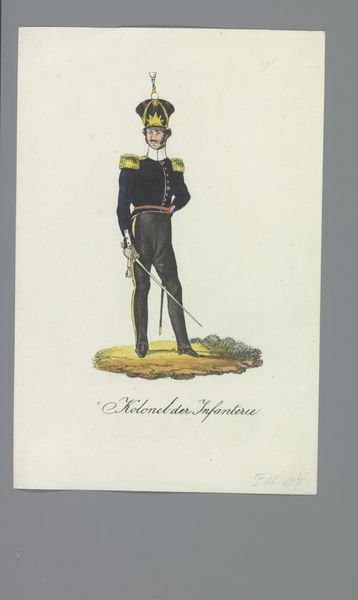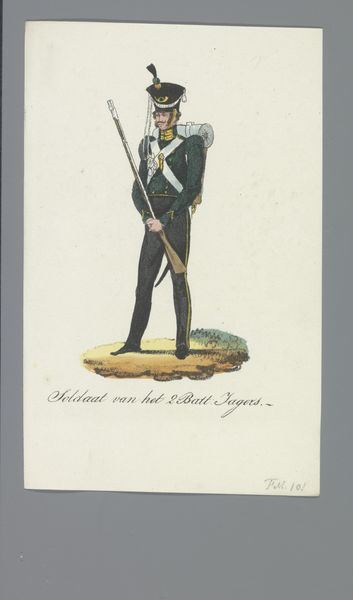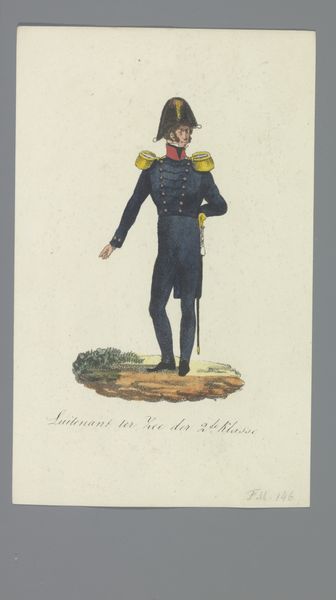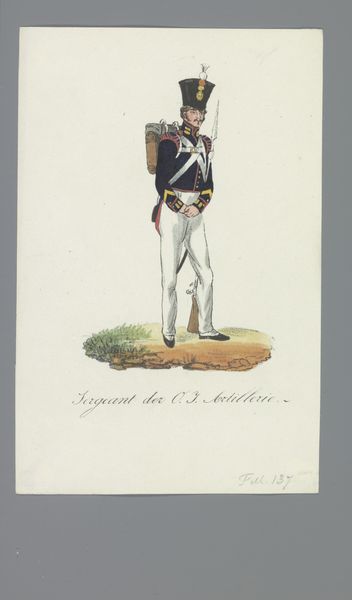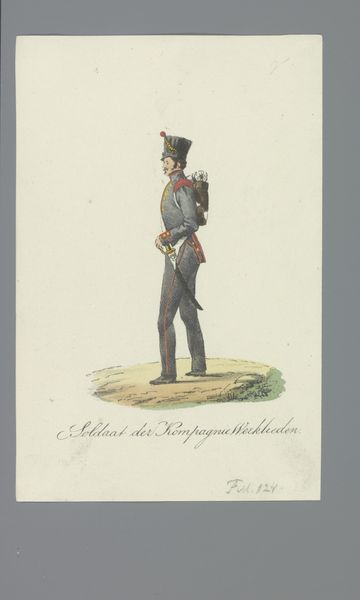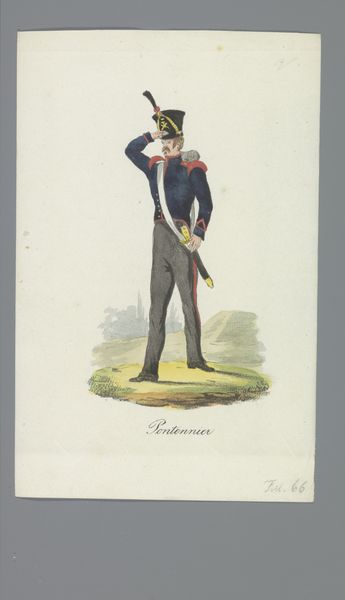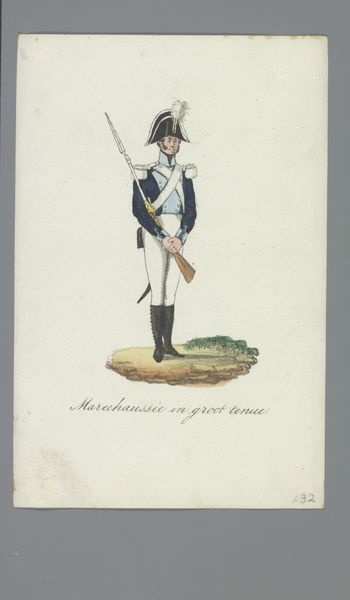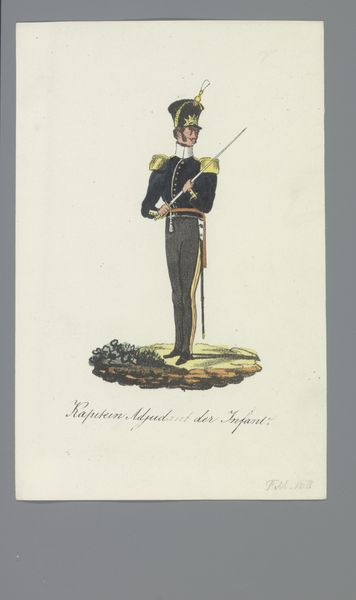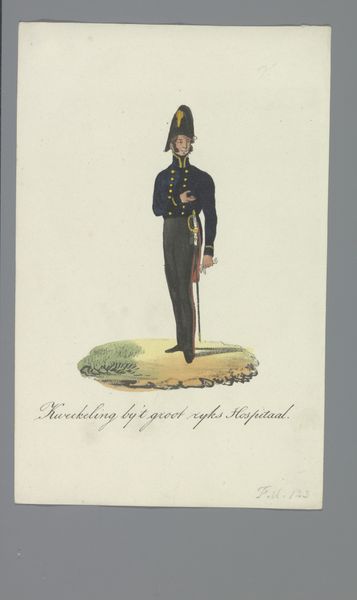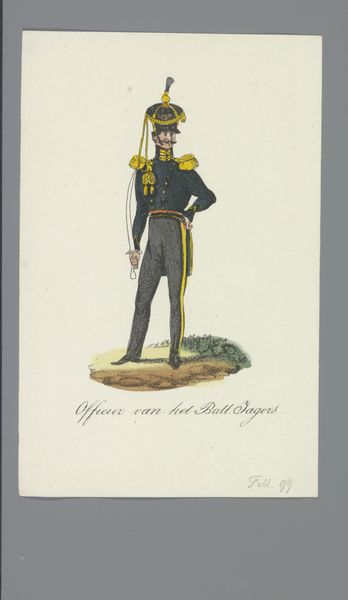
drawing, ink, pencil
#
portrait
#
drawing
#
figuration
#
ink
#
romanticism
#
pencil
#
costume
#
history-painting
#
academic-art
#
realism
Dimensions: height 170 mm, width 110 mm
Copyright: Rijks Museum: Open Domain
Curator: I'm struck immediately by the almost mournful stillness of this fellow. Editor: Indeed, this is "Flankeur der O.Indische Infanterie," a drawing attributed to Albertus Verhoesen, dating from 1835 to 1850. It resides here at the Rijksmuseum. A rendering of a soldier, quite precisely detailed in pencil and ink. Curator: There’s a sense of the delicate fragility to the whole thing. The colors are so muted; even his uniform seems more suggestion than solid form. It feels dreamlike, yet anchored by that stark, upright pose. Editor: Consider the material conditions of its production, though. Pencil and ink; readily portable tools suggesting a need for efficient representation. It speaks to the rise of pictorial documentation amidst Dutch colonial expansion. We're not simply looking at a soldier, but at a technology of imperial observation. Curator: Yes, but doesn't it hint at something more? The way he grips his weapon, a subtle tension. It’s not celebratory; it's waiting. A quiet moment laden with implication, no glory, only duty etched upon his very frame. One could almost believe it wasn't for duty. Editor: And how are we to disentangle duty from the demands of power in that era? These costumes, even in sketched form, reflect a whole machinery of dress codes and regulation intended to turn men into compliant units. Verhoesen’s detail underscores a calculated choreography, more rigid than heroic. Curator: Perhaps. Still, art has this magic way of imbuing objects, even a simple soldier, with complex depth. To focus purely on colonial apparatus, while undoubtedly relevant, seems almost… well, soulless! Editor: I understand the desire for more but if it were more dramatic then it would lose what the materiality represents for the production value during that historical time frame. Curator: It does give one pause, to consider the dual aspects—duty and dream— woven into the existence of the Flankeur. Thank you. Editor: Indeed, it highlights art's entanglement within webs of social and material production, no less significant for being expressed with what seems so sparely drawn.
Comments
No comments
Be the first to comment and join the conversation on the ultimate creative platform.
